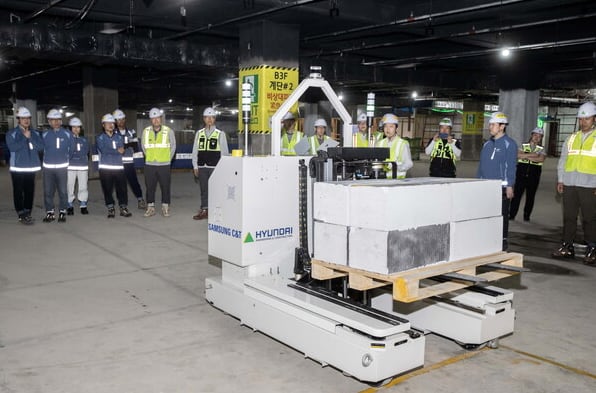
Strategic Collaboration Between South Korean Construction Giants
South Korea’s two leading construction companies, Samsung C&T's Engineering & Construction division and Hyundai Engineering & Construction (Hyundai E&C), are putting aside their competitive rivalry to work together on the development of construction robotics technology. This joint initiative comes as the industry faces increasing pressure to adopt automation solutions for job sites.
The collaboration was publicly announced on July 3, highlighting a broader movement within the sector aimed at improving safety and efficiency. This shift is largely driven by stricter enforcement of the Serious Accidents Punishment Act, which holds companies responsible for workplace fatalities. As a result, there is a growing emphasis on implementing advanced technologies to prevent such incidents.
At a construction site in Cheongna, Incheon, the two firms showcased a newly developed "smart material-handling robot." This device, which resembles an unmanned forklift, uses autonomous driving algorithms and obstacle detection systems to safely transport materials around the site while avoiding workers and equipment. Additionally, it supports multi-unit coordination through a centralized remote-control platform.
This robot represents the first public outcome of a partnership initiated in April 2023 when Samsung C&T and Hyundai E&C signed a memorandum of understanding. Their agreement focuses on jointly developing robotics systems and fostering an ecosystem for smart construction.
Both companies play key roles in the Smart Construction Alliance, a government-backed consortium established by the Ministry of Land, Infrastructure and Transport. Samsung C&T leads the alliance, while Hyundai E&C oversees its big data and robotics subcommittees. This strategic alignment underscores their commitment to advancing the use of smart technologies in the construction sector.
With lawmakers considering a special construction safety law that could impose fines of up to 3% of a firm's annual revenue in the event of fatal accidents, industry experts predict that the adoption of robotics and automation will accelerate. The potential financial penalties serve as a strong incentive for companies to invest in safer, more efficient operations.
Industry officials emphasize that building safer job sites can lead to enhanced profitability in the long run. More construction firms are expected to invest in automation and robotics through collaborative efforts, leveraging shared resources and expertise to drive innovation.
Key Benefits of Robotics in Construction
- Enhanced Safety: Robotics can significantly reduce the risk of accidents by handling dangerous tasks and minimizing human exposure to hazardous environments.
- Improved Efficiency: Automated systems can operate continuously without fatigue, leading to faster project completion times and reduced labor costs.
- Data-Driven Decision Making: Integration with big data analytics allows for real-time monitoring and optimization of construction processes.
- Scalability: Robotics solutions can be adapted to various project sizes and complexities, making them versatile tools for different construction scenarios.
As the construction industry continues to evolve, the collaboration between Samsung C&T and Hyundai E&C sets a precedent for how major players can work together to address common challenges. By combining their strengths, they are not only advancing technological innovation but also contributing to a safer and more sustainable future for the sector.
Post a Comment